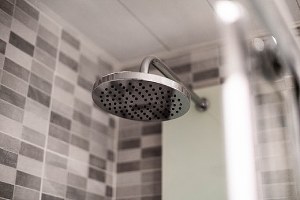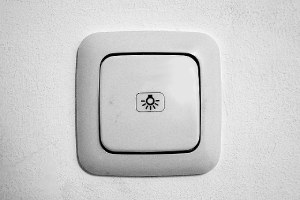 The bathroom is often one of the first places where a home begins to show its age. The heat and humidity that bathrooms are subjected to can take a toll on everything in the room. As fixtures begin to fail and the floors and walls start showing signs of wear, many homeowners decide to carry out a bathroom remodel.
The bathroom is often one of the first places where a home begins to show its age. The heat and humidity that bathrooms are subjected to can take a toll on everything in the room. As fixtures begin to fail and the floors and walls start showing signs of wear, many homeowners decide to carry out a bathroom remodel.
What Is A Bathroom Remodel?
A bathroom remodel involves overhauling a bathroom in a way that is more extensive than simply replacing outdated toilets or broken mirrors. It might entail serious modifications such as adding or removing walls, enlarging the room, relocating showers or baths to a different area and installing new types of fixtures.
Steps To Remodel A Bathroom
Remodeling a bathroom is a major project that turns out best when the steps involved are followed in a logical order. Outlined below are the major steps involved in carrying out a bathroom remodeling project in the best order to maximize results.
Planning And Budgeting
 For the project to be successful, a significant amount of time and effort should go into the planning phase. Many people believe that the planning stage simply involves decisions about the design and décor of the room. However, it is very important to decide and plan for everything that will be needed, down to the last detail, for budgetary purposes.
For the project to be successful, a significant amount of time and effort should go into the planning phase. Many people believe that the planning stage simply involves decisions about the design and décor of the room. However, it is very important to decide and plan for everything that will be needed, down to the last detail, for budgetary purposes.
Homeowners need to make a list of their goals for the remodel, whether they are looking to add space, give the room more spa-like attributes or make it more accessible to family members with special needs.
It may be helpful to look at online tutorials on topics related to bathroom remodeling to determine which steps can be done by the homeowner on their own and which ones are better left to experts. If the work involved will be extensive, it is important to be aware of any applicable building codes.
This is also the phase where electricians, plumbers, remodelers and other experts should be contacted to get their opinion and some cost estimates to find out what can be realistically accomplished in the allotted space and budget. Although professionals cost more up front, the time and frustration they can save are often well worth the investment. They can also advise on whether certain fixtures can be relocated and how much the labor involved might cost.
During the planning and budgeting stage, homeowners should also take extensive measurements, being sure to double-check to avoid unpleasant surprises later.
Demolition
The next phase involves the demolition of the existing room. If the main footprint of the bathroom is being preserved, there may be no need to knock down walls. However, in many cases, the toilet, shower, tub, sink and countertops may need to be removed, along with the flooring and mirrors. This needs to be done carefully to avoid damaging electrical or plumbing work. Light fixtures and towel racks may need to be removed from walls, and electricity and plumbing may need to be disconnected as well.
Plumbing Rough-In
Once the room’s square footage has been exposed, it is time for the plumbing to be prepared for new fixtures. The toilet flange should be replaced, and the new shower pan or tub can be installed at this point. Controls for the shower head should be replaced, and any water line extensions needed should be run during the rough-in. If additional sinks need to be added, this is the time to make the relevant plumbing modifications.
Electrical Rough-In
 During the electrical rough-in, outlets may need to be relocated or installed. Outlets that will be situated near water need to have GFCI receptacles. Ensure that light switches will align with new vanities, and add hook-ups for shower and ceiling lighting. The vent fan should be positioned as close to the shower as possible for maximum efficiency, and 15-amp wiring can be replaced with 20-amp circuits for hair dryers and similar appliances.
During the electrical rough-in, outlets may need to be relocated or installed. Outlets that will be situated near water need to have GFCI receptacles. Ensure that light switches will align with new vanities, and add hook-ups for shower and ceiling lighting. The vent fan should be positioned as close to the shower as possible for maximum efficiency, and 15-amp wiring can be replaced with 20-amp circuits for hair dryers and similar appliances.
Paint Walls
Before closing up the walls, it is a good idea to add some blocking between studs to support any grab bars that may eventually be added near the tub or toilet. Once the vapor barrier has been installed and the walls have been closed up, it is time for painting. Experts recommend painting the walls before the tile, sink, vanity, tub and toilet are installed to reduce the chances of splattering paint on new fixtures. Interior paint that has a semi-gloss or satin finish is the best choice for the humidity encountered in bathrooms.
Install Tiles
After the paint has dried, it is time to install tiling. Shower walls and bathroom enclosures should be tiled first before addressing other areas of the bathroom. Wall tile comes next, followed by floor tile. In addition to using grout in a color that complements the bathroom, the corners should be caulked for maximum protection.
After the tiling is completed, the shower door, lights and exhaust fans can be installed. This is typically followed by the vanity, sink and toilet. Then the project can be finished by installing light switch plates, shelving, towel bars and other accessories to give the room the desired decorative touches.
Final Walkthrough
At the end of the project, a final walkthrough should be carried out to ensure everything has been installed properly and safely. Homeowners who carry out any steps of the project themselves should consider having an expert conduct the walkthrough to identify any potential hazards.
Consider Professional Bathroom Remodeling Services
A bathroom renovation is a big project that can quickly grow out of hand. Many homeowners seek the help of experts with the experience to identify any potential issues before they become difficult or costly to correct. If you are planning to remodel your bathroom in the near future, consider getting in touch with the professional bathroom remodelers at Dirt Connections to learn how they can help ensure your project is carried out successfully within your desired budget and time frame.
Summary

Dirt Connections was started with one goal in mind: providing quality residential and commercial construction services to clients on time and on budget. Reach out for more information on how we can support your next project.
For your convenience our estimates are free and by appointment. Call 703-940-9949 for a free estimate today!









































